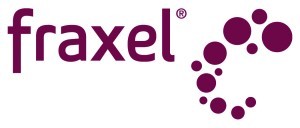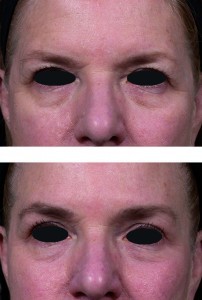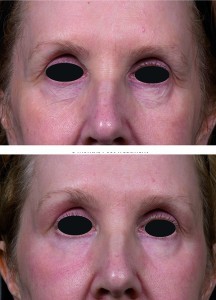Since the emergence of fractional laser therapy at the turn of the century, Fraxel laser technology (Solta Medical, Inc., Hayward, Calif.) has been synonymous with a safe, effective, predictable and popular modality. This novel marriage of state-of-the-art computer and laser technology, along with dedicated professionals researching and using these devices in practice, is responsible for hundreds of thousands of satisfied patients.

Fraxel DUAL and Fraxel re:pair
Development of the technology and research into its uses continues. Two examples of this are the Fraxel DUAL and Fraxel re:pair SST laser systems. The non-ablative Fraxel DUAL combines the capabilities of the original Fraxel re:store’s 1550 nm Erbium glass fiber laser with the relatively superficial 1927 nm Thulium fiber laser, which reacts more briskly with water in skin cells for a more powerful effect. This gives practitioners the ability to combine superficial and deeper treatments for more rapid resolution of superficial photodamage, actinic keratosis, lentigines and any other surface pathology. Treatment of acne scars is one of my favorite indications using the Fraxel Dual laser.
Patients require about half the number of treatments with the Fraxel DUAL than with the original Fraxel re:store when it comes to the treatment of dyschromia associated with photodamage. The device can be used safely on all skin types, anywhere on the body.
The Fraxel re:pair SST uses the well-understood ablative CO2 laser and has the ability to treat superficially as well. The gentler superficial therapy is suited for use on and off the face, and on delicate areas, such as the chest. Treatment is easily tailored through adjustment of treatment parameters and one’s choice among four handpieces:

Figure 1 (right) Before Treatment with Fraxel re:pair SST FMDA (600 micron) and Fraxel re:pair SST 2 mm. (left) 3 months post-treatment
-
Fractional Deep Dermal Ablation (FDDA) with a 135 micron spot size for deep wrinkling and severe photodamage
-
Fractional Micro Dermal Ablation (FMDA) with a 600 micron spot size for fine lines, pigmentation, and textural irregularities
-
A 2.0 mm Ablative Debulking Handpiece for syringomas, pigmented nevi, chelitis and keratosis, warts, pearly penile papules and other discrete lesions requiring aggressive therapy
-
A 0.2 mm Incisional Handpiece for precise surgical use.
Switching between handpieces is quick and easy. The combination of gentler and more aggressive ablative laser treatments makes Fraxel re:pair SST effective for burn scars or keloid scars. An integrated smoke evacuator is unique to the device, for an additional measure of utility and convenience.
Treatment protocols
I have developed an effective protocol for the treatment of periocular wrinkling using a combination approach with the Fraxel re:pair SST. This traditionally challenging facial region relies on the capabilities of the different handpieces for a customised and precise treatment.
First, there is general treatment of periocular skin using either of the superficial handpieces with settings between 15 mJ to 50mJ and 20–30% coverage (density of microthermal zones of damage, or mTz) for an overall phototightening effect. Afterward, one traces each individual wrinkle using the 2.0 mm surgical handpiece at 225 mJ and 1 HZ or 10 HZ, which is aggressive enough to see the tightening as you work. Used in a similar manner, this therapy is also excellent for resistant lines around the vermillion border, causing a plumping effect, as well as overall coverage of the perioral region. Downtime is minimal, mainly consisting of redness for 3–5 days. Patients may require a second treatment session, but usually a single session will suffice.

Figure 2 (right) Before Treatment with Fraxel re:pair SST FMDA (600 micron) and Fraxel re:pair SST 2 mm. (left) 3 months post-treatment
Together, Fraxel DUAL and Fraxel re:pair SST provide practitioners with a variety of treatment options for treating surface or deeper pathologies with different wavelengths, adjustable treatment parameters, and ablative versus non-ablative therapy. For that reason, these devices are clinical workhorses. The treatment is based on the indication, the characteristics of the individual patient and how much downtime he/she will tolerate, and how deep or specific the pathology. Treating deeper means more aggressive settings would be used, such as when correcting striae or scars, and superficial means using less aggressive settings, as when treating sun damage.
Both platforms also feature the proprietary Intelligent Optical Tracking System (IOTS), which allows practitioners to use the handpiece in a paintbrush motion. This technology ensures the practitioner is providing more consistent, predictable and uniform treatments, and in significantly less time, than traditional stamping methods. The IOTS is a unique feature and truly sets Fraxel lasers apart from other fractional technologies.
An indispensable tool
In our New York City-based practice, we see the full range of ethnicities and skin types, serving an international patient base. This has made Fraxel DUAL and Fraxel re:pair SST indispensable. The Fraxel family of lasers stand as the most used lasers we have. One can use the Fraxel DUAL safely on all skin types all over the body, and I feel comfortable using Fraxel re:pair SST with skin types I–IV.
Patient satisfaction is extremely high because these devices deliver consistent results among this diverse population. Fraxel is my top revenue generator and a source of profound satisfaction. Equally important is the depth and breadth of scientific research behind the technology, eclipsed only by its safety and efficacy.



